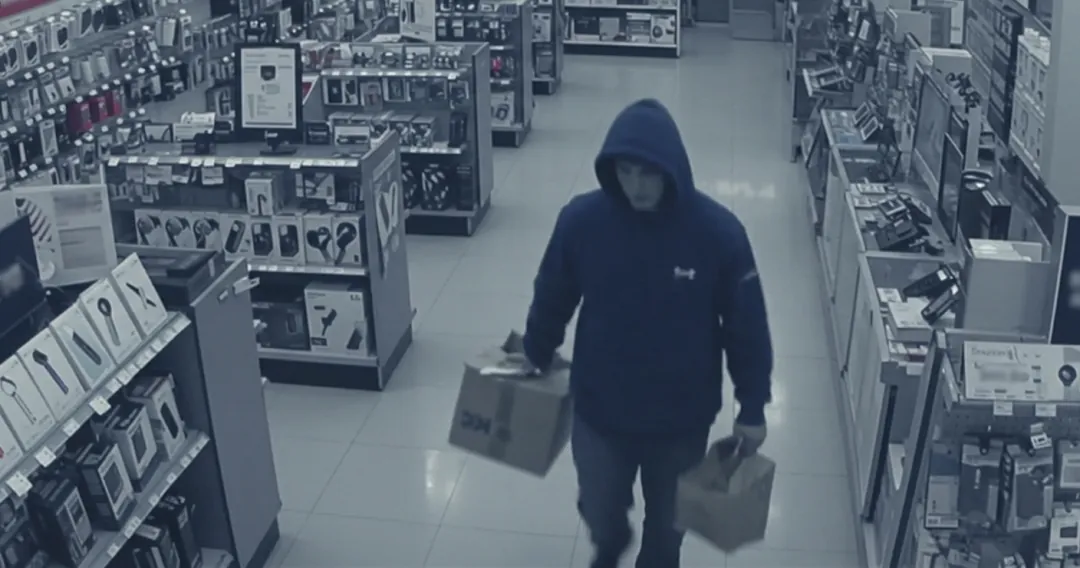Key Takeaways:
-
- Effective merchandise protection combines physical security, technology, and employee training.
- A comprehensive strategy addresses various threats including shoplifting, ORC, and internal theft.
- Continuous monitoring and data analysis are crucial for improving protection efforts.
- Balancing security measures with positive customer experience is key for retail success.
Understanding Merchandise Threats
Retailers face various threats to their merchandise. Shoplifting remains a persistent issue, but it’s far from the only concern. Organized Retail Crime (ORC) involves sophisticated criminal networks targeting high-value or easily resold items. Internal theft by employees can be even more damaging due to insider knowledge and access. Additionally, accidental damage or mishandling of products can lead to significant losses.

Key Components of Effective Merchandise Protection
A robust merchandise protection strategy involves three main components: physical security, technological solutions, and employee training.
Physical Security Measures
Store layout plays a crucial role in deterring theft. High-value items should be placed in visible areas, away from exits. Security tags and devices act as both deterrents and alarms. Modern surveillance systems not only record incidents but can also use AI to detect suspicious behavior in real-time.
Technological Solutions
Inventory management systems provide real-time tracking of stock levels, helping quickly identify discrepancies. Data analytics can reveal patterns in theft incidents, allowing for targeted prevention efforts. RFID technology enables precise tracking of individual items throughout the supply chain and in-store.
Employee Training and Awareness
Well-trained employees are a powerful asset in merchandise protection. They should be taught to recognize suspicious behavior without profiling customers. Proper handling procedures reduce accidental damage. Importantly, excellent customer service itself acts as a deterrent to theft.
Implementing a Comprehensive Merchandise Protection Strategy
Effective implementation starts with a thorough risk assessment. Identify your most vulnerable products and areas. Develop clear policies and procedures for different scenarios, from suspected shoplifting to inventory discrepancies. The key is integrating various protection methods into a cohesive system where each component supports the others.
Establish key performance indicators (KPIs) for your merchandise protection efforts. These might include shrinkage rates, apprehensions, or recovery values. Continuously monitor these metrics and be prepared to adjust your strategy. Use data to make informed decisions about where to focus your protection efforts.
Remember, the goal of merchandise protection is to foster a safe and welcoming environment for honest customers. Overly aggressive security measures can drive away business. The most successful retailers find ways to protect their merchandise while still providing an excellent shopping experience.
Final Thoughts
Merchandise protection is an ongoing process that requires constant attention and adaptation. By implementing a comprehensive strategy that addresses various threats, leveraging technology, and empowering employees, retailers can significantly reduce losses and protect their bottom line. In the dynamic world of retail, effective merchandise protection isn’t just about preventing loss – it’s about creating an environment where both businesses and customers can thrive.
Explore ThinkLP’s Blog
Now that you know about merchandise protection, you can find additional insights on loss prevention and safety intelligence on ThinkLP’s blog. The blog features articles, case studies, and industry insights that provide practical tips and strategies for improving your loss prevention efforts.
Request a Demo
If you are interested in how ThinkLP’s software can support your loss prevention initiatives, we invite you to request a demo. Their Loss & Safety Intelligence Platform is designed to integrate with your existing operations, helping you reduce risks and improve efficiency. Reach out today to learn how ThinkLP can assist your organization in optimizing its loss prevention strategy.


